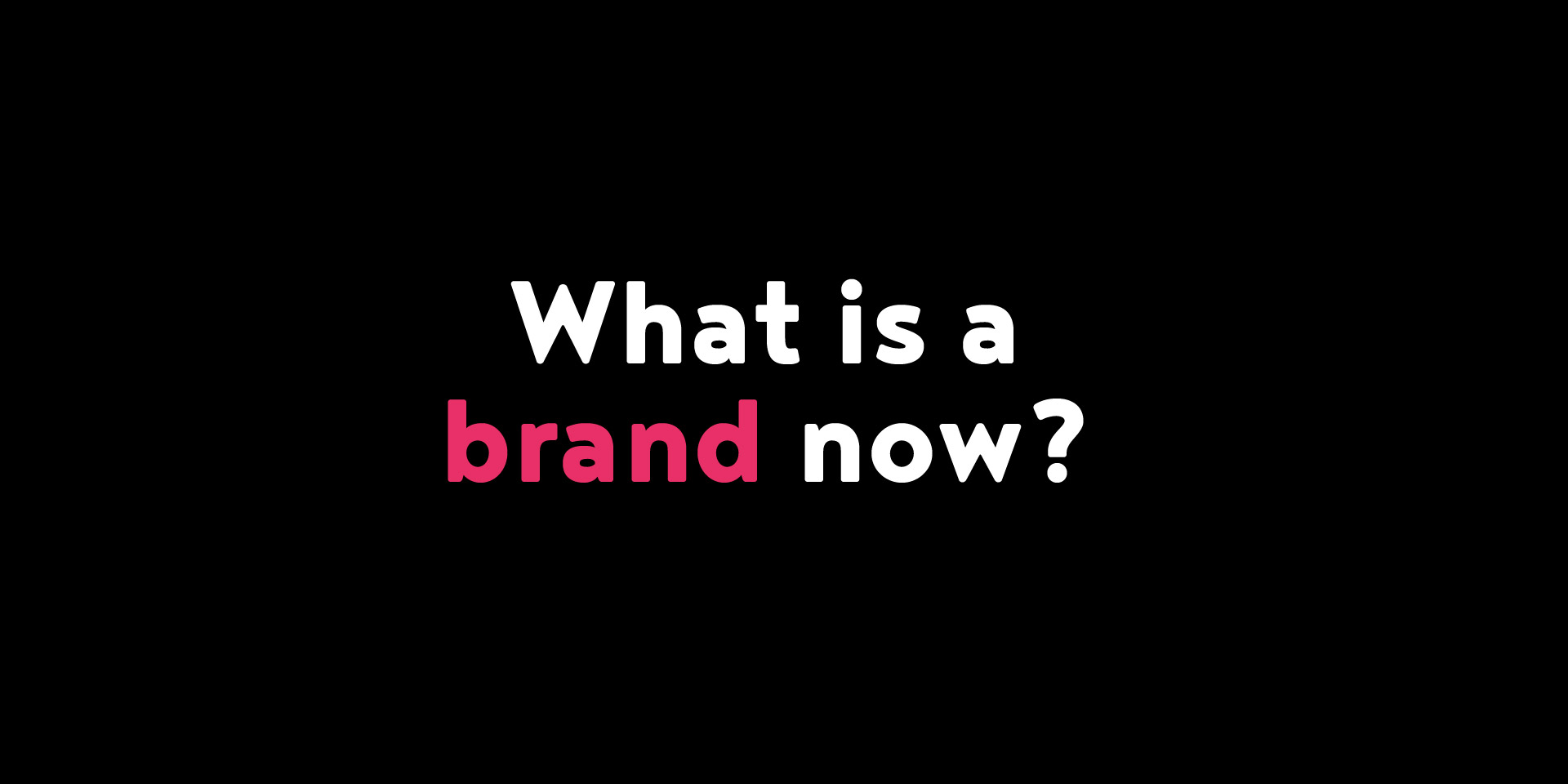What is a brand now?
We’ve had about a hundred years of the brand as a conscious, deliberate, managed thing that we use to represent, promote, promise and evangelise, so what is a brand now?
A brand is a vision.
For a while, all the big thinking said that we should make a brand become one-value, one-word that it could totally own, that would be something very important to people and could lock it permanently into the collective mind in a very meaningful way. So, Volvo means safety, Virgin means rebel, Apple means innovation, and so on.
But this is the second century. The global village and the human system and information technology and social networks have all moved in and moved on, a long way. The people have been put, ideologically, at the heart of the organisation.
A brand is a vision of the way the organisation believes things ought to be.
You go back to the middle of the last century and what mattered to people was the substance of an idea or a product or a service: the intrinsic quality of it. It had to be solid and lasting. Through the 1960s and 1970s, attention moved from the objective to the subjective – not ‘how good is this’ but ‘how does it make me feel’.
After that, from the eighties on, branding took the lead and we all followed in a quest for externalised satisfaction: ‘how does it make me look’. Branding was about the external, with making things appear to be a certain way.
Many organisations and their consultants are still using that model: using branding to put a good face on. But the people have learned from all the earlier transitions.
Further empowered by the information age, they have embraced radical change. They are experienced, knowing, demanding and selective. Now they expect to enjoy quality and feel good and look good and, now, feel good about anyone who wants their support. Now, they are involved with their suppliers and providers and servicers.
Take the birthday cake as an example. Back before packaged goods changed our lives, mums made birthday cakes from scratch, mixing farm products like flour, sugar, butter and eggs. As the goods-based industrial economy advanced, people started buying pre-mixed ingredients in packets, from brands like Greens and Betty Crocker. Later on came the service economy, and busy parents started ordering cakes from the bakery or the supermarket. By the time we get to the 1990s, people aren’t making the cake or even throwing the party. Instead the whole event is outsourced to McDonalds or Burger King and we are in the experience economy.
After this, people almost started to see themselves as brands. They want everything they do and buy to fit their idea of themselves and their world: a place with a complex set of values. They can search and check the products and services and prices and practices and behaviour of every provider they use. They are highly brand-literate and they are connected to each other in more ways than ever before. Now a birthday cake would have to be top of the range from a well-known individual craft-artisan, beautifully designed, hand-made and custom finished from cruelty-free, free range, guaranteed organic ingredients. Welcome to the information economy.
Today, to be relevant and effective and sustainable, a brand is a vision of the way things ought to be to meet the needs and aspirations of a highly sophisticated user constituency.
Some people say you can explain a brand as a story, but what is it the story of? It’s the story of a vision. For most branding purposes that story has to be reduced to a very few compelling ideas which are more or less instantly understandable, but a story implicitly means ‘telling with words’. In 1862, the Russian writer Ivan Turgenev wrote “A picture shows me at a glance what it takes dozens of pages of a book to expound.”
We often hear it said that a picture is worth a thousand words, and needs and aspirations are feelings – ideas that people largely experience as images in their minds. Brands need to respond in the same language. To understand how brands appeal we can draw on findings from Plato about the four ways in which people are aware, which Jung also used in his teaching on human psychology. These are: thinking, using logic and rationale; sensation, the direct perception of phenomena; feeling, concerned with emotions; and intuition, the ability to sense the intangible. Notice that only one – the logic and rationality of thinking – expressly requires words to function.
No surprise that we call it the company vision – a word implicitly proposing visual ideas. The company vision is usually written in words but it is almost always intended to engender strong feelings of inspiration and commitment by evoking visual imagery.
A brand is a vision that needs to be created in pictures.
Perhaps it is clear why the job of creating branding became the role of a separate and identifiable design industry. Advertising agencies have always dealt creatively in a large amount of imagery, but most frequently also involving a significant word count. Design bears the central ethic of communicating with line and form and colour and illustration. And this is still presently the key defining attribute of Atticus.
–
Advertising graphics, company logos, public relations photos, studio publicity shots etc., which were originally used for advertising/public relations purposes on the Internet or elsewhere; these images have been incorporated into this booklet for the purposes of illustration only . As such, we make the assumption that the advertisers, studios, individuals and businesses featured will not object to the beneficial use of this material.To discuss use of imagery please contact us at [email protected]







